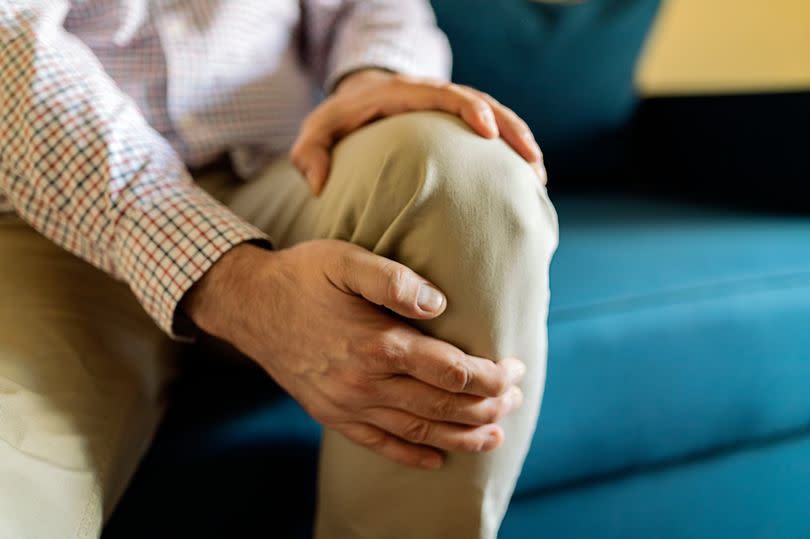Three parts of your body could be a giveaway that you have high cholesterol

Keeping an eye on your cholesterol levels can be a straightforward way to gauge if you're eating right or getting enough physical activity. However, unless you go into your local GP, it's not always easy to determine just how fit and healthy you truly are.
While it's crucial to get a blood test if you have health concerns, many people aren't aware that high cholesterol can be detected just by looking at someone.
Cholesterol accumulation in your body is typically due to a diet rich in fats, smoking, alcohol consumption, lack of exercise, or genetics. If this fatty cholesterol begins to line your blood vessels excessively, it could lead to a blockage resulting in severe health issues like heart attacks and strokes.
Read more:
Physiotherapists become first to give ultrasounds by patient bedsides
Summer events launched to tackle loneliness in Hull's over 65s
As we age, the likelihood of developing high cholesterol increases, with over two-thirds of men and women above 65 diagnosed with elevated levels during routine health screenings. However, anyone can develop high cholesterol, whether due to genetic or environmental factors, so being able to identify the symptoms of its build-up in your body - just by glancing in the mirror - is crucial.
The only sure-fire way to know if you have high cholesterol, which can be managed with diet, exercise, and medication, is through a blood test. But if you notice any of these signs on your face, hands, or legs, or if you're simply concerned about your cholesterol levels, you should consult your GP immediately, reports Gloucestershire Live.
The British Heart Foundation outlines precisely how cholesterol operates within us: "Cholesterol is a natural fatty substance in your blood. It's produced in the liver and it's also in some of the foods we eat. Cholesterol is important to keep the cells in our bodies healthy."
"High cholesterol means that you have too much cholesterol in your blood. There are many things that can cause this. If you don't take steps to lower high cholesterol, it can increase your risk of heart attack and stroke."
Face
Peer into someone's eyes or your own reflection and you might just spot an indictor of excessive cholesterol levels. Cholesterol journeys throughout the circulatory system, often accumulating stealthily at various areas.
One signal of heightened cholesterol is known as xanthelasma. Manifesting as bumpy formations on the eyelid or encircling the eye, these lumps hint at under-the-skin cholesterol build-up.
Their distinct yellow tint gives away their nefarious nature; albeit generally harmless, they flag possible fat accumulation within your bloodstream. Another common sign that can be observed in one's eyes is known as arcus senilis, which manifests as a blue, white, or grey circle around the iris. It often begins as a line at the top and bottom of the iris before forming a complete circle.
Men are more prone to developing this ring around their iris, which serves as a warning that cholesterol levels may be on the rise. This becomes increasingly prevalent with age. In children, this ring is referred to as arcus juveniles, and it's a stronger indication of high cholesterol levels.
The third most frequent symptom of fat accumulation in your blood vessels is the development of a retinal vein occlusion, leading to a bulging eye. This severe condition can occur when cholesterol breaks off and obstructs the vein supplying blood to your retina, causing leakage.
Hands
Just as many signs of cholesterol build-up can be detected in your hands as in your eyes. However, many people might overlook symptoms like a swollen knuckle or small bumps on the hands.
Tendon xanthomata can lead to cholesterol deposits forming around tendons in your body, resulting in soreness and swelling. While this is most noticeable on your knuckle, it can occur anywhere, including your Achilles tendon.
High cholesterol can often be mistaken for other health issues, but one key sign that your levels might be too high is a frequent or painful tingling sensation in your hands. This happens when cholesterol deposits in your blood vessels start to restrict blood flow, causing your hands to tingle as oxygenated blood struggles to reach them.
However, this doesn't cause numbness - if you're experiencing this symptom but can't feel your fingers, it's not due to your cholesterol levels.
Another sign of high cholesterol is pale nails, indicating that not enough blood is flowing through the vessels in your hand.
Legs
The same symptoms can also occur in your legs as cholesterol causes plaques to form in your blood, leading to narrowed vessels, numbness and tingling throughout your legs.
These symptoms should prompt a visit to the GP as they could indicate Peripheral Artery Disease (PAD). The NJ Cardiovascular Institute explains: "Your legs are quite far from your heart, but they're also at risk of complications from high cholesterol."
"Peripheral artery disease (PAD) is a complication that can develop when the arteries in your legs get too narrow due to buildup from high cholesterol levels."
"PAD can cause numbness and tingling in your legs or feet. Loss of sensation can increase your risk of ulcers and other slow-healing wounds. Another common symptom of PAD is leg pain that feels like muscle cramping, particularly with physical activity."
If you experience any of these symptoms, or are simply concerned about your health and lifestyle, the only way to find out your cholesterol levels and get advice on how to lower them, is by visiting your GP and taking a test.

 Yahoo News
Yahoo News 
